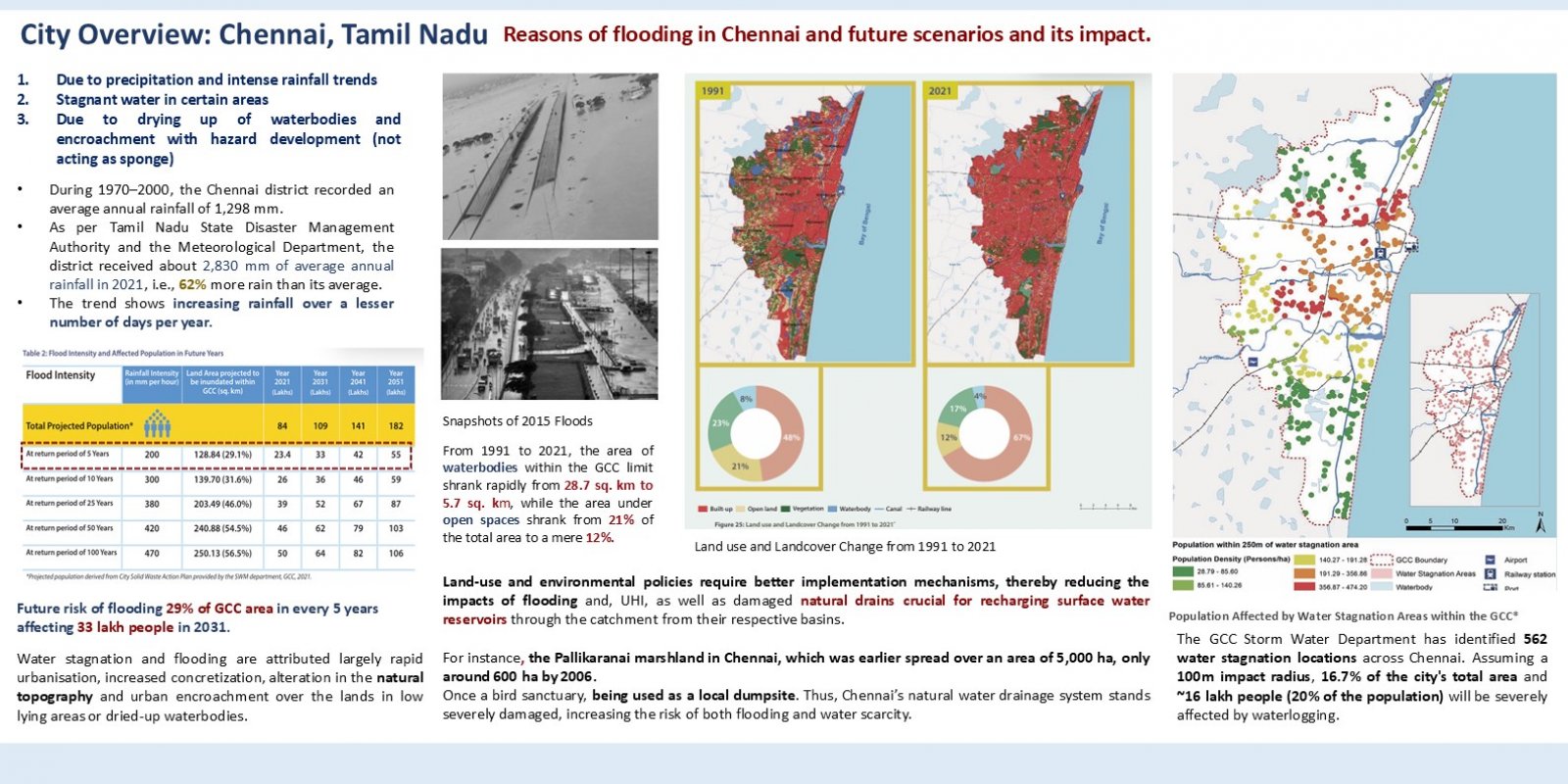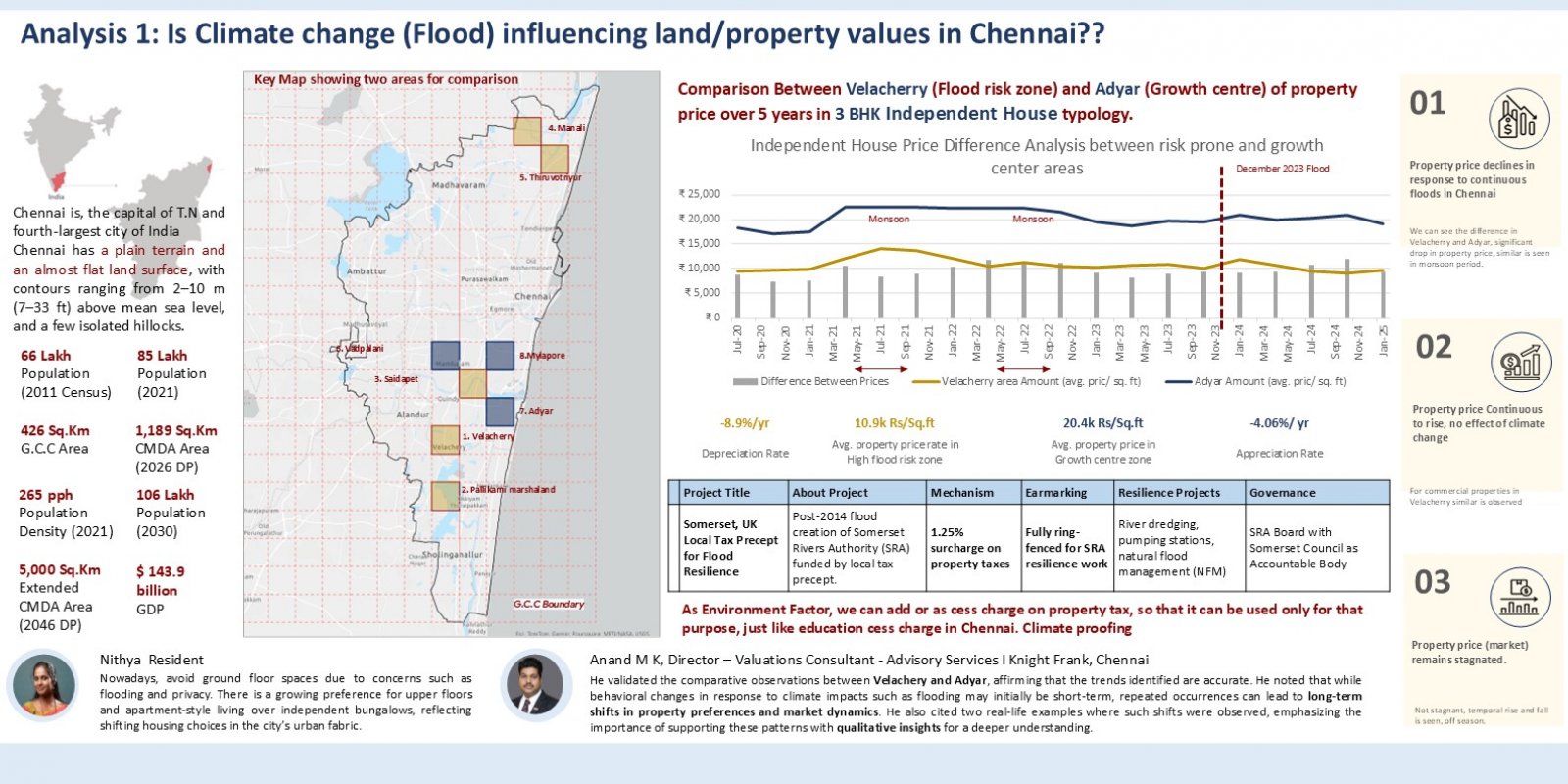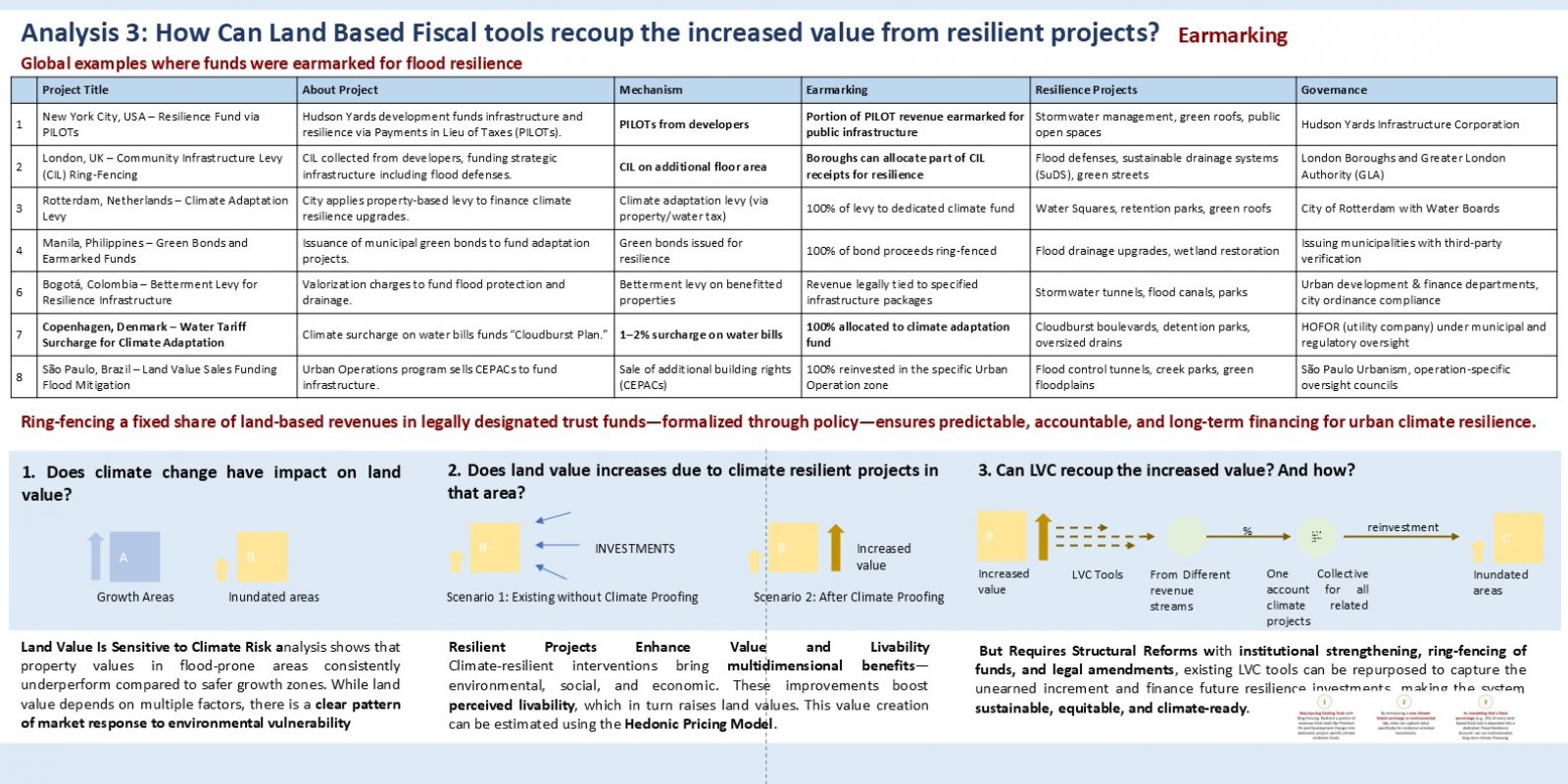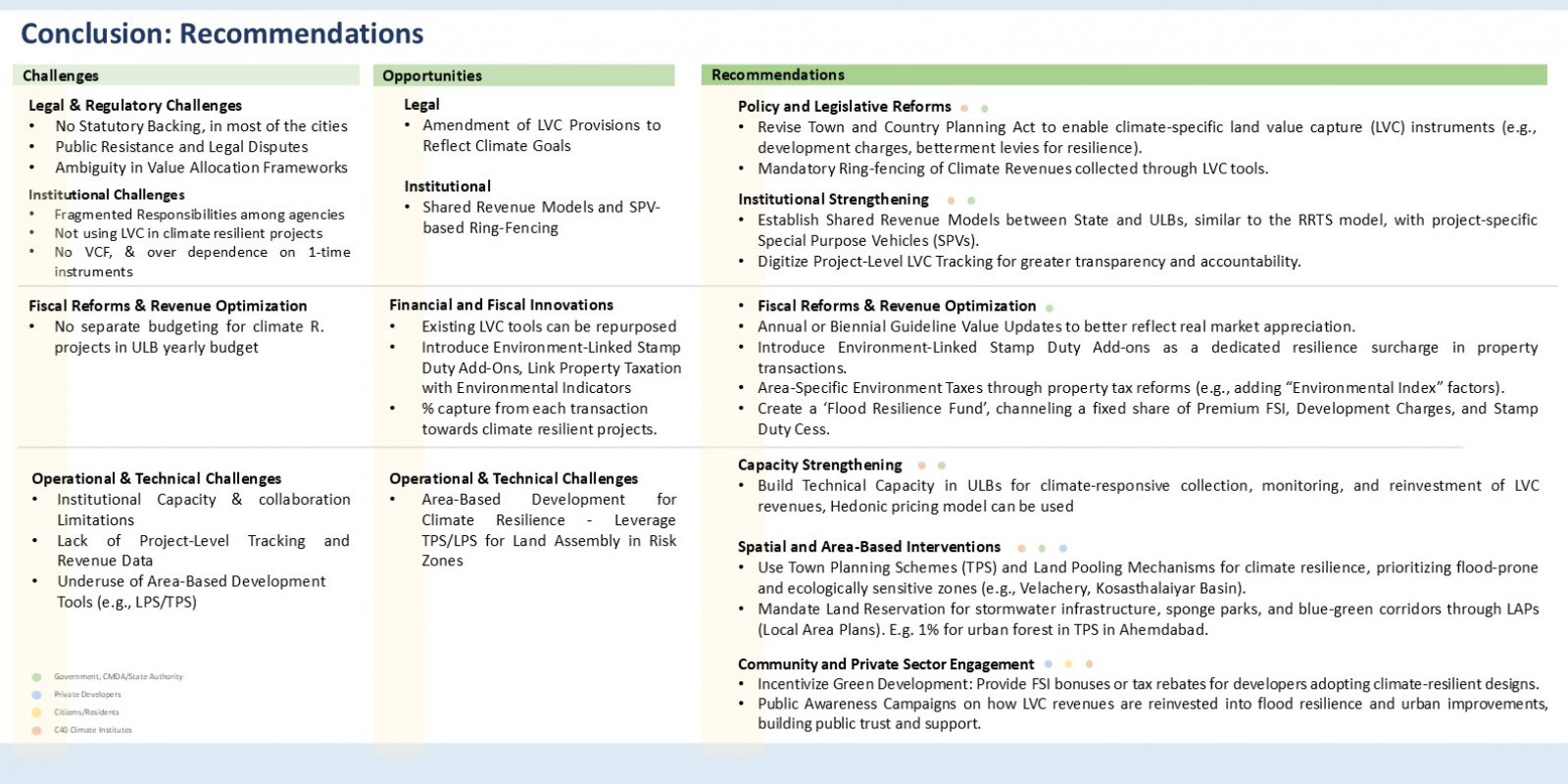Your browser is out-of-date!
For a richer surfing experience on our website, please update your browser. Update my browser now!
For a richer surfing experience on our website, please update your browser. Update my browser now!
This study analyses the link between climate resilience and land value in Indian cities, focusing on whether adaptation projects can enhance property values and how Land Value Capture (LVC) can finance resilient infrastructure. A multi-method approach was used, combining stakeholder consultations with spatial analysis and secondary sources (property records, CAAP reports). A quasi-experimental comparison assessed price trends across flood-prone and flood safe zones. International examples, like Cali, Colombia’s use of hedonic pricing, helped validate the hypothesis. Global LVC tools were also mapped to Chennai’s context to generate locally grounded recommendations. Initial findings suggest that flooding tends to depress property values in vulnerable areas, but well-designed adaptation projects improve liveability and environmental quality, leading to long-term appreciation. The study proposes three approaches to capture this increase: (1) repurposing existing tools like premium FSI and development charges through ring-fenced, project-specific resilience funds; (2) introducing climate-linked surcharges or environmental taxes; and (3) institutionalizing a fixed percentage of land-based fiscal revenues into a ‘Flood Resilience Account.’ The study explores the untapped potential of LVC as a strategic tool to fund climate adaptation in Indian cities. It establishes a clear linkage between resilience efforts and land value changes, highlighting how LVC can evolve beyond transit-oriented development. With appropriate policy reforms, stronger municipal capacity, and transparent governance, LVC can become a scalable and sustainable mechanism to finance climate-resilient infrastructure in flood-prone urban contexts.








